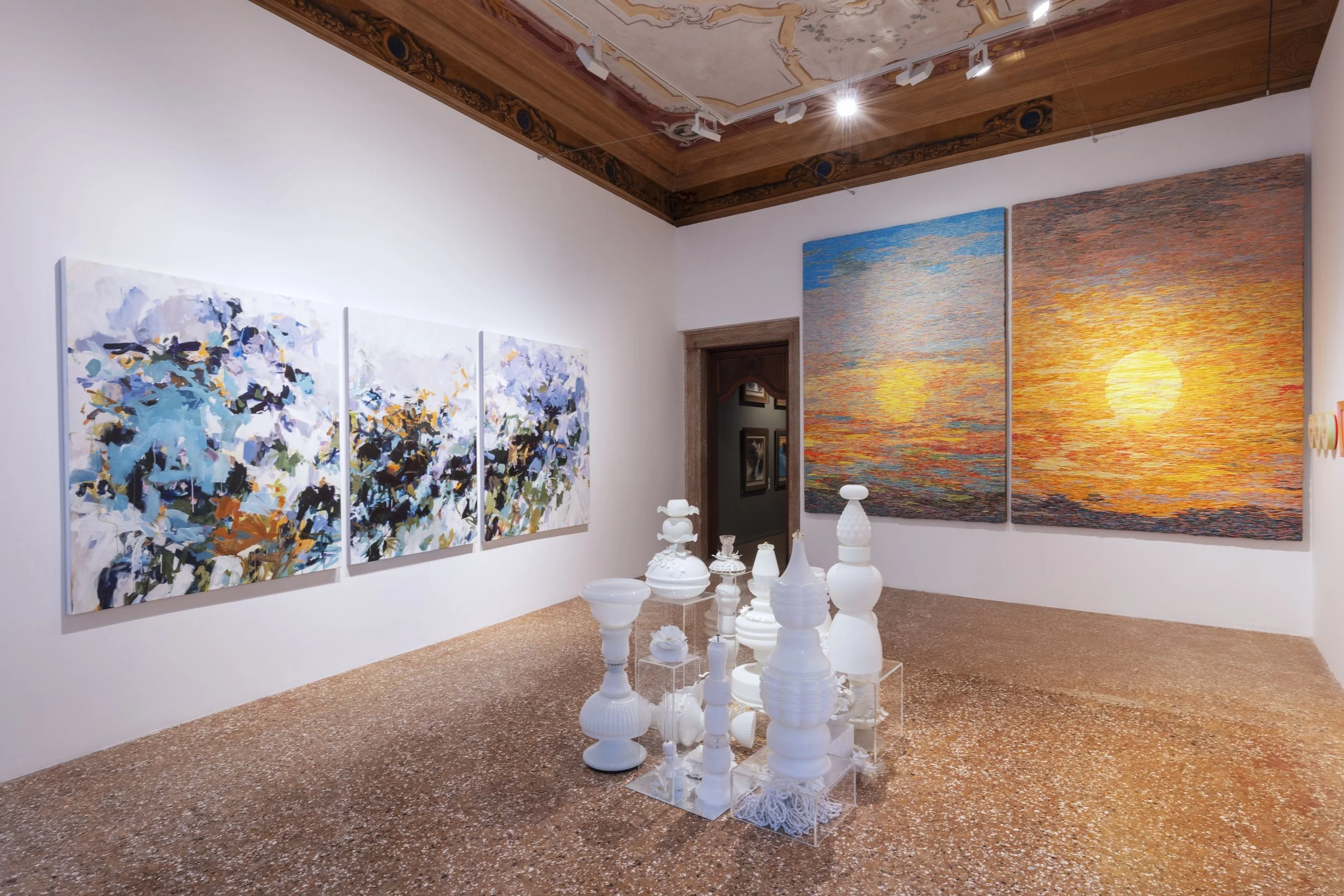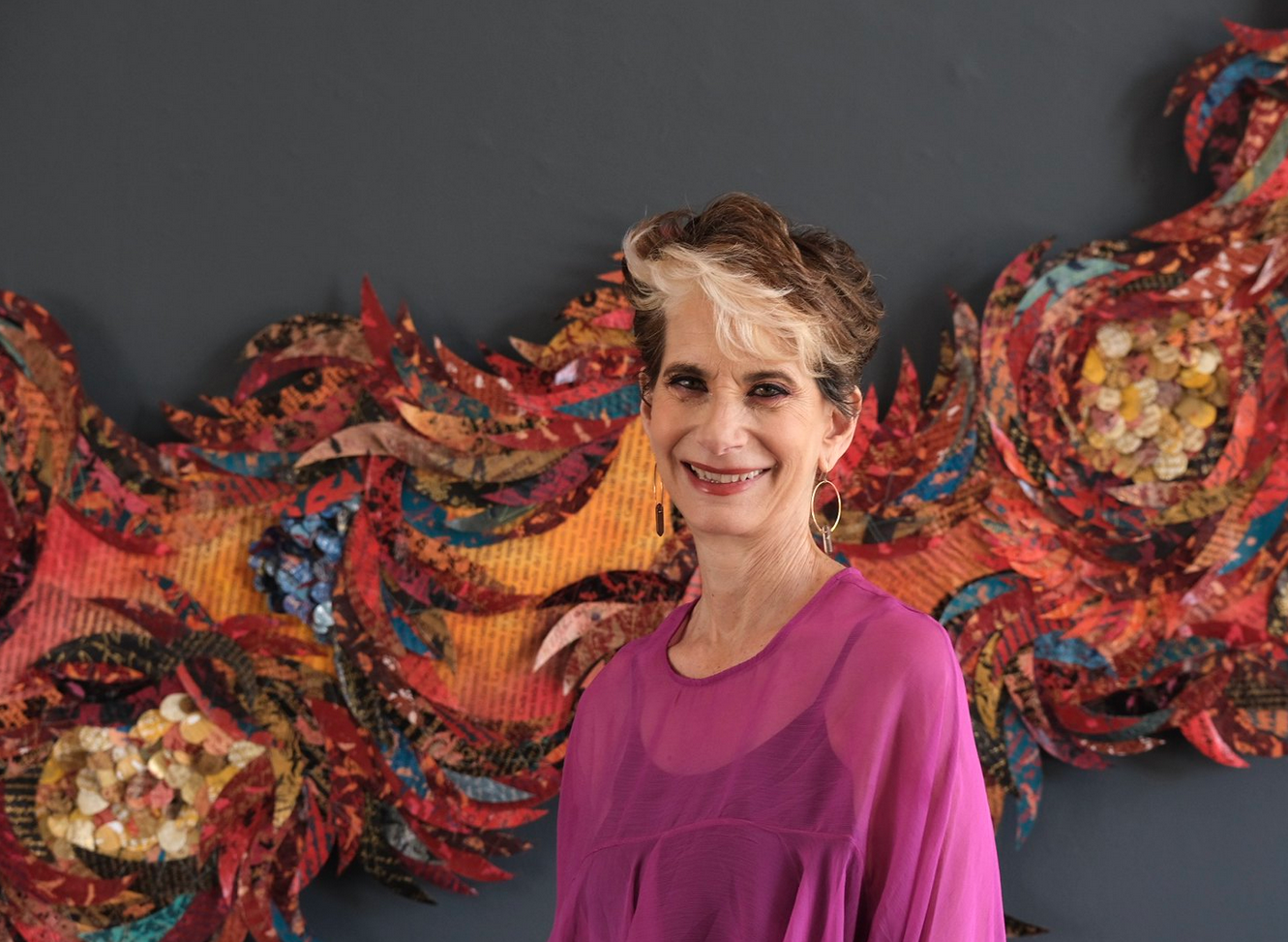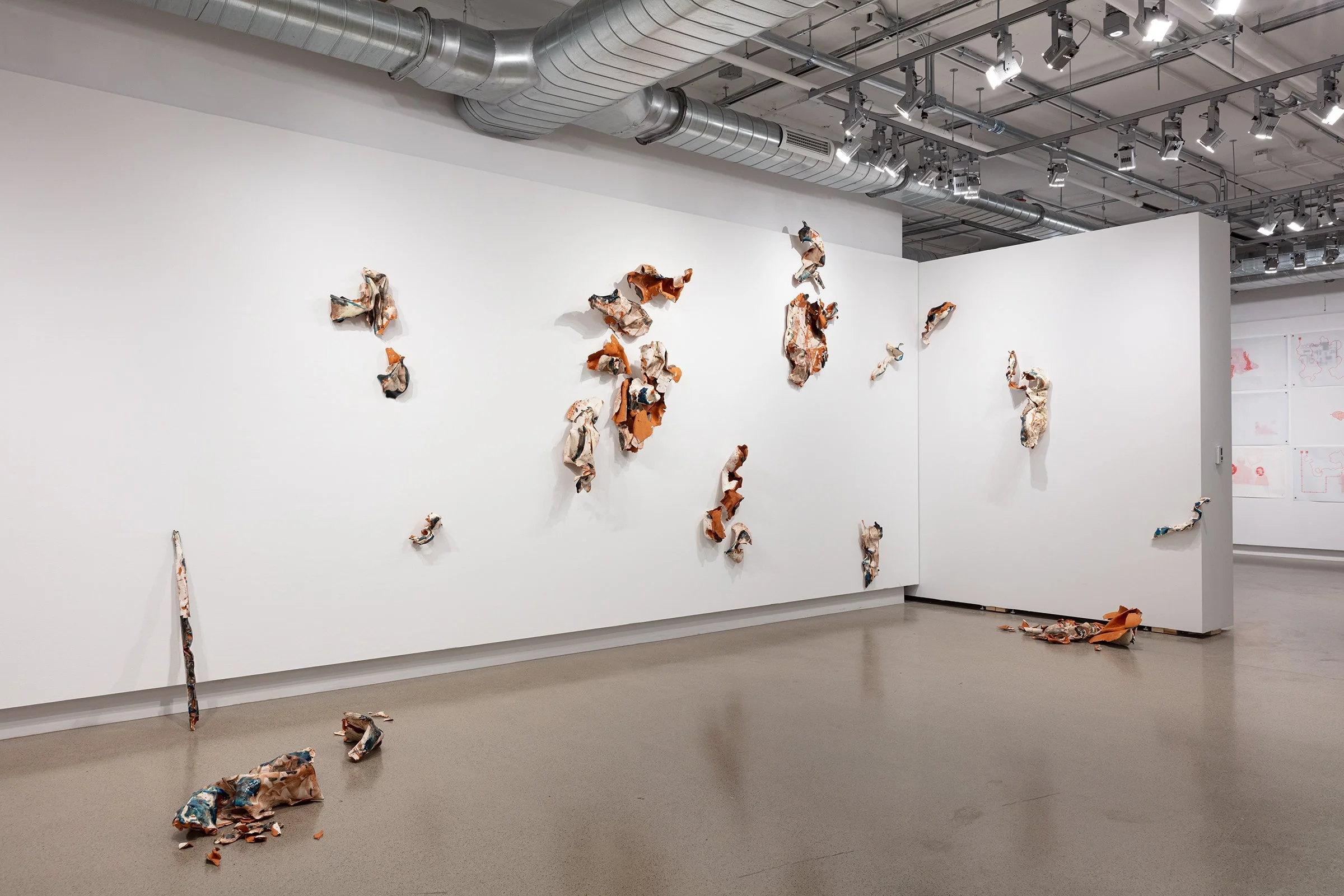Augusto Poderosi was born in Rome. He works eclectically in the fields of figurative and audiovisual arts. Augusto started his activity in the laboratories of scenography at the Cinecitta Studios. Interviewed by Mohamed Benhadj.
Augusto Poderosi is also a sculptor, painter and restorer to the holy see he realizes numerous artistic patronage for the Basilica Papale di S.Paolo Fuori le Mura, di S.Antonio di Padova, Basilica Del Cristo Re (Rome) for the Vatican City and various other Roman churches. Refines the knowledge on sacred themes graduating from the Pontificio Ateneo Benedettino of' Liturgical Institute of Sant'Anselmo. From 2000 to 2003 he was the artistic director of the laboratory of art to the Basilica di S.Paolo Fuori le Mura carrying out tasks of master of sacred and liturgical art to the Benedictine monks of the monastery he worked on the restoration of the portal of the Basilica for the Jubilee 2000.
In 2008 is the first artist has received permission to expose sculptural installation “Corpo di Luce” at the Basilica of S Pietro in Vincoli at Rome under the eyes of the statue of Moses by Michelangelo. Collaborator of famous advertising agencies of the caliber of Movie Magic he is also choreographer in combat film and actor for spot directed by Tony Scott and Rob Cohen he has also collaborated, with directors like Mario Missiroli e Ugo Gregoretti for the theater Argentina and the theater Valle. The great passion for cinematography leads him to collaboration as the actor with some of the major Italian directors debuting with Federico Fellini, in Ginger & Fred, Damiano Damiani, Carlo Lizzani, Mauro Bolognini, Lamberto Bava, Giancarlo Nanni, Sergio Martino, Pal Sandor, Stefania Sandrelli; For tv Claudio Calicari, Paolo Poeti, Gianni Lepre, Paolo Fondato, Giulio Questi, Giuliana Gamba, Renato Di Maria, Marco Serafini, Paolo Bonora, Angela Redini, Carlo Alberto Pinelli, Paolo Monico Sebastian Leda e Francisco D'amorim Lima.
Photo courtesy Augusto Poderosi©
Augusto, you are a figurative and audiovisual artist. How did your education, experience, or training develop your skills?
Honestly, classical or traditional school, it never did for me. I have always needed to live art directly, working on learning it until I get a result. This gave me the opportunity to experiment with all the materials and the ability to solve problems. The consistency stems from the fact that I have always made a living from my art. My training took place in film studios in Rome, where I learned to love art and cinema, experimenting with everything, improvising with nothingness. I also worked with my friend and master Federico Fellini and with other great directors, and thanks to my physicality and sensitivity, I learned the craft of the actor, working directly and instinctively.
Please describe the intention behind your art. How do you express this intention successfully?
I never sought a style to identify with it. I listened to my instinct to live art as a whole life without identifying with the things I do. If I had to speak with the voice of an ordinary person, I would tell you that I am not capable of doing anything. I try to hold back the emotions of people who appreciate or not my works; those emotions are the purpose of my art (emotion is Art and not object itself). For many years I did not sign my work, and I did not document them. I even forgot that I made them. I consider myself an artist of secrecy, and although obliged by the virtual presence. I try first to be, then to appear. For me, This is my success.
As an artist, you refer to the light of here that does not come from an external source but an internal one. Which source do you refer to? What does the relation external-internal mean for you?
The exterior and the interior are two apparent, different dimensions, which I live as the only dimensional condition of my existence. When I close my eyes, darkness appears, which is a state of change-fear, but immediately after the light reappears, here is that the outside and the inside are a single dimension, where silence does not exist. By listening to it, we discover a persistent sound that is inside us, following it, the light appears. This dimension must be sought with practice and humanly experienced by overcoming the concept of silence and darkness, which is an imaginative concept that is not real, while Light does not. Light emanates, reflects, and goes beyond the matter.
Your installations reflect your artistic vision, inner life, and your spiritual path to complex levels of reality where only light, the element of knowledge, is considered as a truthful sign of the divine power. Can you expand on this philosophy and its importance for progressing in the human being hierarchy?
There is nothing that can be identified with "the truth," especially if we call it divine power, which is a religious concept that nullifies man. The "Word" is the true limit that erases our arcane instinct. For example, this interview is made up of words that try to express concepts that are of no use. Art does not need words or concepts, even paradoxically a written work. Emotion is the common thread of all living things; for this, we need each other to be humanly connected and not technologically. This oleoelastic human connection would definitively nullify a terrible objective reality that is the hierarchy. We need equality; without it, we cannot progress humanly.
Photo courtesy Augusto Poderosi©
You are also a sculptor, painter, and restorer, you realized realizes numerous artistic patronage for the Basilica Papale di S.Paolo Fuori le Mura, di S.Antonio di Padova, Basilica Del Cristo Re (Rome) for the Vatican City and various other Roman churches. Could you reveal your influence source in directing the viewers into the path for a spiritual journey?
I would like to point out that I am not a classical believer in religions, let alone Catholicism, it seems strange, but in reality, this says a lot about me. I do not like to worship the Cross, which I consider a symbol of death, but I love the Cross as a symbol of a man who rises again. In every moment of our existence, we always die and rise again, even when the last breath abandons us. Each of us has an original path. Working with these clients, I learned that our roots are not actually in these places. Still, they derive from others that need to be traveled, according to our sensitivity that goes outside of our social-cultural preparation. It is the perception between exterior and interior that presents itself as a journey.
Your process includes lighting, geometry, and sculpture. How can you describe your complex artistic production and technique for our readers?
I have always been attracted more than by the classical figure by sacred geometry, in it lies anything or form. When I do works, I do not create, only the Divine can do it, but I try to discover what is suggested to me, visualizing with emotion, what you want to teach me or inspire. The realization of an artwork is a teaching that the artist receives, and it must be shared with the viewer. That's why all the arts are sacred, even desecrating art. Then, some artists have the gift of aesthetics, but this is another discourse.
Let's say you have an exhibition proposal for coming up months. What does your process look like – from creating or adapting an artwork, to the final exhibition show?
I never do preparatory sketches (of what I would like to accomplish). I realize it directly without any repentance because everything is movement and change. I define it with three phases: emotional visualization, alchemical realization of matter, emotional sharing that declines any truthful explanation.
Photo courtesy Augusto Poderosi©
Today, the world is facing the pandemic COVID-19. As an Italian artist based in the Rome region, and lockdown under Coronavirus quarantine, What is a typical day like for you? How do you continue doing your art under these circumstances? And why do you like so much what you do?
I was already prepared for all this. We go beyond the reason for the daily; we know that it would happen. We, Italian artists, live art as being isolated without any help from the institutions, economic or social-cultural contribution is not considered. We do not have any kind of support from the state, because we're scary; free thought contrasts with hierarchy. As you know! Artists can read events and manipulation of information. Thanks to these mysterious abilities that I continue to make art, refining my perception of a human being that marks time, experiencing the sunrise and sunset. In this perpetual motion, I find the pleasure of making art right now. I can't even conceive of being something other than an artist. I was born like this! How do you say to a blind man, who was born blind, what does it mean: to see?
They say if you could be anything but an artist, don't be an artist. What career are you neglecting right now by being an artist? What current project are you working on?
These are film writing projects that I have presented to some film production companies in Rome. The first is a fantastic-gothic TV series, about the figure of an eighteenth-century Italian character who existed. One of the most famous alchemists, named "CAGLIOSTRO." Opera wrote with my actor friend Franco Mirabella. The second is "AL HAKAWATI" or the Storyteller; it is a tale without an end about the Arab and Mediterranean tradition, always of a fantastic genre. This project is linked to a series of 12 paintings that I am carrying out. Finally, I'm preparing a new installation called "THE ADAMANTINO MAN" or Diamond Man. Right now, I'm exhibiting with the Amedeo Modigliani Foundation for a series of international exhibitions that are now standing still.
What is your relationship with your city, Rome?
Rome is my mother, the great mother with big breasts, to cling to feed and absorb her antibodies. She is a lover, a whore, a saint, a sacred and a secular woman. That's why I have a great sense of respect for the Matriarchy. It is a place where at night you can get lost in its mystery. You meet Caravaggio, Michelangelo, Titian, and many others who respond to you with all their human authors; But this is another movie. It is a fortune for an artist to be born in Rome. People here still marvel, and it's easy to stop and talk to strangers without that, they mistake you for a fool or a depraved.
Who is Augusto Poderosi in three words?
wonderfully lazy, tenacious and protester






















